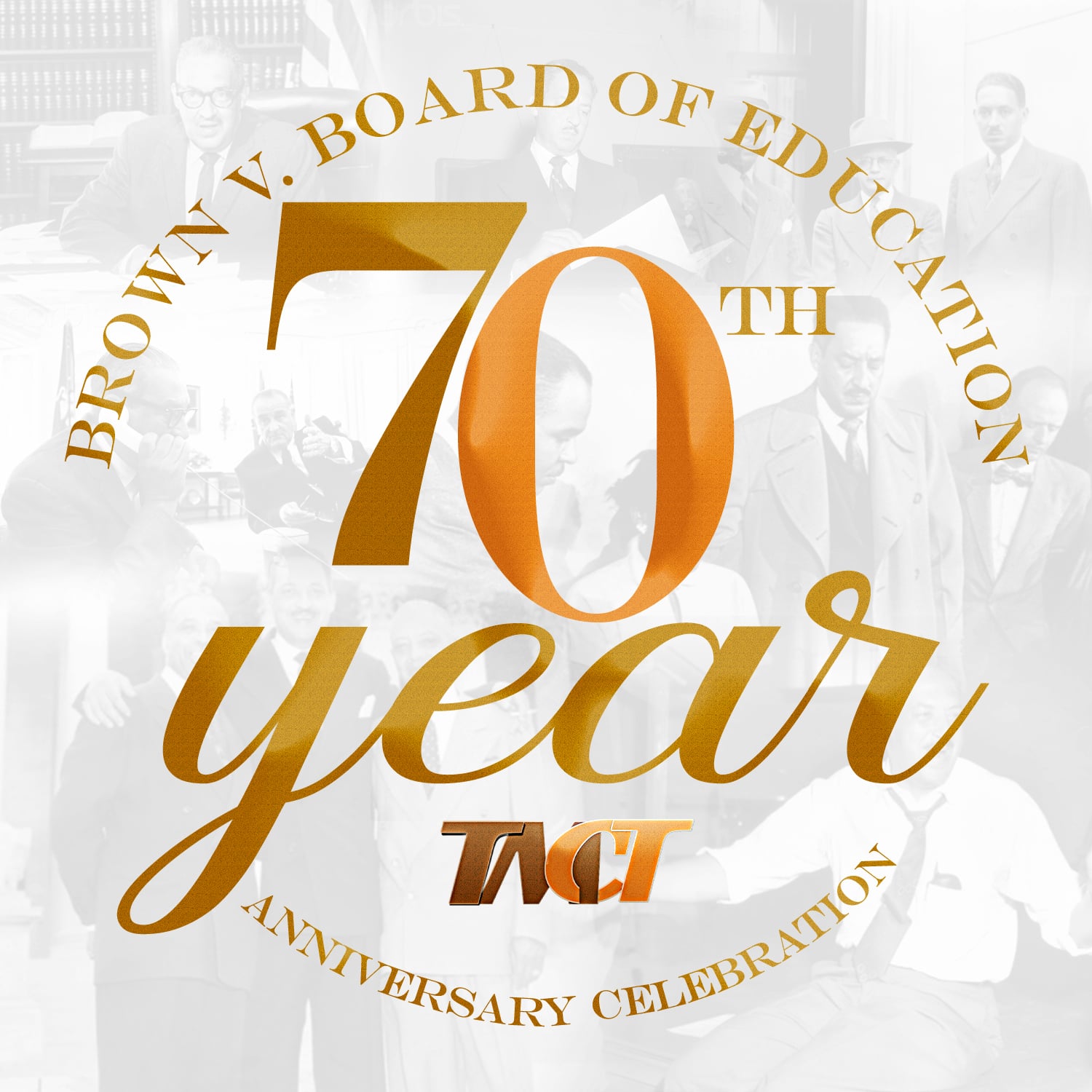Thurgood Marshall Center Trust, Inc. Marks 70th Anniversary of Brown v. Board Decision with an Innovative Series of Events and Displays
It’s been a banner year for the officers, board of directors, and staff of the Thurgood Marshall Center Trust (TMCT or the Center), Inc., as the Washington, D.C.-based nonprofit organization hosted several entertaining and intellectually charged programs in celebration of the 70th anniversary of the historic Brown v. Board of Education Decision and to honor the contributions of Associate Justice Thurgood Marshall.
TMCT Brown v. Board 70th Anniversary Celebrations
Charleston, SC
Baltimore, MD
Washington, DC
‘Breath of Freedom’ by Jonathan Green
This painting, by nationally renowned artist Jonathan Green, marks an important moment in American history: the opening day of the Briggs v. Elliott trial on May 28, 1951, at the Charleston Federal Courthouse. The Briggs case, brought by twenty-one courageous citizens of Summerton, South Carolina, was the first legal challenge in modern history to public-school racial segregation.
The painting depicts the large crowd that gathered at dawn at the corner of Broad and Meeting streets, hoping to gain admission to the limited courtroom seating. Judge J. Waties Waring, a Charleston-based federal judge assigned to a three-judge panel to hear the case, described the crowd as citizens who had come on a “pilgrimage” seeking “freedom and liberty.” “To me, it’s awfully heartening,” he said, when people “suddenly sniff a little breath of freedom.”
In painting this image, Mr. Green has sought to capture the dignity and character of those in attendance, many of whom descended from the highly sophisticated West African rice culture. Mr. Green was raised in Gardens Corner, South Carolina, where he developed a strong feeling for his cultural heritage. After completing military service, he attended the Art Institute of Chicago and earned a bachelor’s degree in 1982. Art critics and reviewers consider Jonathan Green one of the most important contemporary painters of the southern experience. His work, which has been exhibited in major venues nationally and internationally, reflects an intrinsic sense of history and place. He lives now in Charleston.




